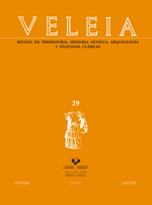From Manuscripts to Monuments: The Epigraphy of Humanism and the Renaissance
##plugins.themes.bootstrap3.article.main##
##plugins.themes.bootstrap3.article.sidebar##
Abstract
It is possible to evaluate the consolidated and refined way in which tituli were produced in the late 15th throughout the entire 16th centuries, as exemplified by the workings of Felice Feliciano, Giovanni Francesco Cresci and Luca Orfei. Conversely, this is almost completely lacking in the transcription of those tituli which had underpinned the formulation of the ground rules of incision. This is clearly shown in the epigraphic manuscripts produced between the late fifteenth and early sixteenth centuries. The set of rules, theorised and imposed, underpinning monumental epigraphic realisation and the transcription of those exempla on epigraphic syllogists are seemingly contradictory. In fact, they show, on the one hand, a skilful and philological search for the forma; and, on the other, the almost complete absence of, or at least the lack of concern for, faithful palaegraphic transcription of texts. The study aims to explain these issues, while being directed at scholars interested in the history of the transcription of humanist epigraphic manuscripts.
Downloads
##plugins.themes.bootstrap3.article.details##
Unless otherwise noted, the contents of the electronic edition of the OJS platform are licensed for use and distribution under a Creative Commons Attribution-NonCommercial-NoDerivatives 4.0 International (CC-BY-NC-ND) license.
The journal does not charge any financial compensation to authors for publishing in it and provides full access to the archives without any kind of embargo from the day of electronic publication. This respects the national open access policy.
All originals published in the journal Veleia, whether in print or digital format, are the property of the University of the Basque Country (UPV/EHU). © UPV/EHU
Authors of articles (whether research articles, news articles, news items or reviews) will be able to access their own work on the Journal's website. Authors will be able to put them in their personal repositories and will also have the possibility of pre-print dissemination of articles accepted for publication.

